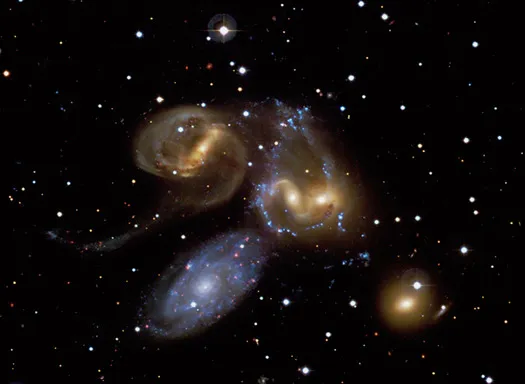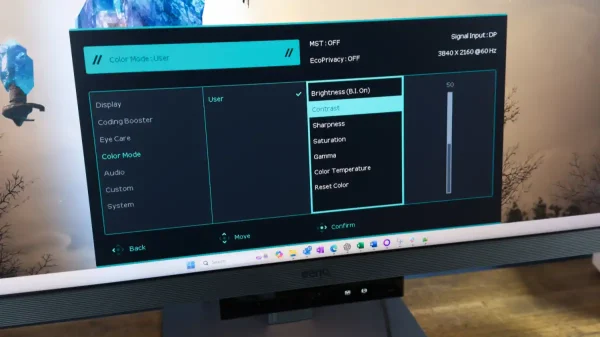The James Webb Space Telescope’s inaugural science operations last year began with a focused observation of Stephan’s Quintet, a fascinating group of five galaxies bound together in a complex structure. The resulting data has been combined with observations from other telescopes, including the Hubble Space Telescope, Spitzer Space Telescope, and Chandra X-ray Observatory, to create a multi-wavelength exploration of this celestial phenomenon. By integrating these diverse data sets, researchers have generated a 3D visualization of the galaxy group, providing a more comprehensive understanding of its intricate structure.
The primary goal of this project is to facilitate both scientists and the general public in grasping the fundamental nature of Stephan’s Quintet. According to Frank Summers, leader of the team and visualization scientist at the Space Telescope Science Institute, “Shifting from a 2D image to a 3D medium can help viewers really understand the structure of Stephan’s Quintet.” Each observatory’s contribution has enabled the gathering of diverse insights, ultimately forming a richer narrative about this compact and complex group of galaxies.
The resulting 3D visualization contrasts images obtained from NASA’s Hubble Space Telescope, Spitzer Space Telescope, Webb Space Telescope, and Chandra X-ray Observatory, offering a unique opportunity to explore the galaxy group across the electromagnetic spectrum. This sequential presentation of data from multiple observatories allows researchers to gain a deeper understanding of the intricate relationships between the galaxies, stars, and other celestial objects within the group.

Stephan’s Quintet
In addition to the visualization, scientists have employed sonification, a technique that translates visual data into an auditory experience. The sonification process begins at the top of the image and moves downward, assigning higher pitches to brighter sections and lower pitches to dimmer ones. The galaxies are represented by varying frequencies, while specific objects like stars and background galaxies are associated with distinct sounds, such as marimbas and cymbals. The result is an audio file that captures the essence of the galaxy group, highlighting its unique features and properties.
Kimberly Arcand, leader of the sonification project at the Chandra X-ray Center, notes that “Astronomy has always been very visual, but there’s no reason why we have to represent the data through that manner alone.” This innovative approach to data depiction enables the scientific story of Stephan’s Quintet to be translated into an auditory experience, offering a fresh perspective on this remarkable celestial phenomenon.
By merging visual and auditory experiences, researchers are pushing the boundaries of scientific communication, allowing a wider audience to engage with and appreciate the intricate beauty of the universe. As scientists continue to explore the vast expanse of space, innovative techniques like visualization and sonification will play an increasingly important role in sharing their findings with the world, inspiring new generations of explorers and scientists.








































